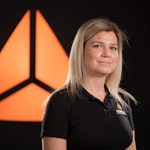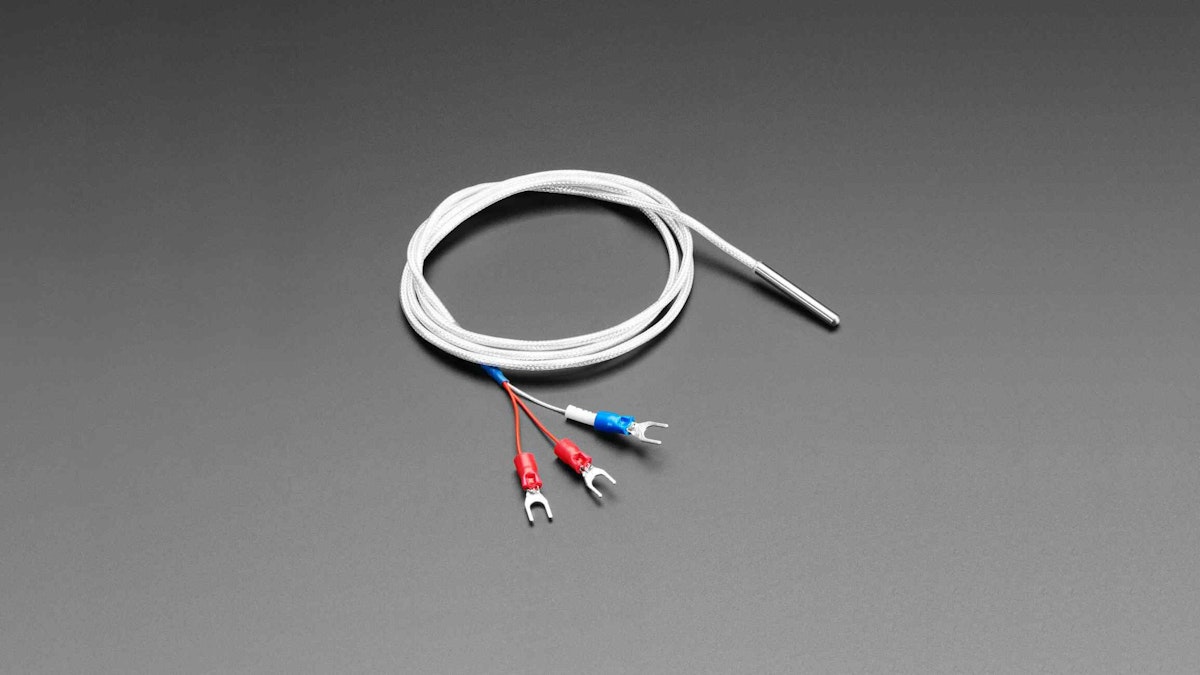Table of contents
Browse categories
Browse authors
 AB
ABAlberto Boffi
 AL
ALAlessia Longo
 AH
AHAl Hoge
 AB
ABAljaž Blažun
 BJ
BJBernard Jerman
 BČ
BČBojan Čontala
 CF
CFCarsten Frederiksen
 CS
CSCarsten Stjernfelt
 DC
DCDaniel Colmenares
 DF
DFDino Florjančič
 EB
EBEmanuele Burgognoni
 EK
EKEva Kalšek
 FB
FBFranck Beranger
 GR
GRGabriele Ribichini
Glacier Chen
 GS
GSGrant Maloy Smith
 HB
HBHelmut Behmüller
 IB
IBIza Burnik
 JO
JOJaka Ogorevc
 JR
JRJake Rosenthal
 JS
JSJernej Sirk
 JM
JMJohn Miller
 KM
KMKarla Yera Morales
 KD
KDKayla Day
 KS
KSKonrad Schweiger
Leslie Wang
 LS
LSLoïc Siret
 LJ
LJLuka Jerman
 MB
MBMarco Behmer
 MR
MRMarco Ribichini
 ML
MLMatic Lebar
 MS
MSMatjaž Strniša
 ME
MEMatthew Engquist
 ME
MEMichael Elmerick
 NP
NPNicolas Phan
 OM
OMOwen Maginity
 PF
PFPatrick Fu
 PR
PRPrimož Rome
 RM
RMRok Mesar
 RS
RSRupert Schwarz
 SA
SASamuele Ardizio
 SK
SKSimon Kodrič
 SG
SGSøren Linnet Gjelstrup
 TH
THThorsten Hartleb
 TV
TVTirin Varghese
 UK
UKUrban Kuhar
Valentino Pagliara
 VS
VSVid Selič
 WK
WKWill Kooiker
How To Measure Temperature with RTD Sensors [PT100, PT200, PT1000, ...]

September 26, 2025
In this article we will discuss how temperature is measured with RTD sensors today, with enough detail so that you will:
See what RTDs are and how they work
Learn the basic types of RTDs available and how they are used
Understand how RTDs can be interfaced with your DAQ system
Are you ready to get started? Let’s go!

Introduction
Did you know that temperature is the MOST often recorded physical measurement? Knowing the temperature is critical for the correct operation of everything from the human body to an automobile engine, and everything in between.
Temperature is measured with appropriate temperature sensors. There are several temperature sensors used for this, and we support them all:
Thermocouple sensors
RTD sensors
Thermistor sensors
In this article, we look specifically at the RTD sensor, one of the most popular temperature sensors in the world.
What is an RTD sensor?
Compared to the thermocouple, the RTD (Resistance Temperature Detector) is generally more linear and drift-free within its measuring range. However, due to their platinum content and more complex construction, they are more expensive than thermocouples. RTDs are sometimes also referred to as “resistance thermometers.”
RTDs are heavily used in scientific and laboratory applications, industrial applications, and pharmaceutical manufacturing applications. The common denominator among these applications is that accuracy and drift-free performance are more important than cost, putting the RTD ahead of the thermocouple in the selection of sensor type.
But they are also heavily used in consumer products. There are probably dozens of them in your house right now, inside your dishwasher, clothes dryer, toaster or toaster oven, the thermostat on the wall, your air conditioner, refrigerator, freezer - even your cell phone! Of course, these are very small and very inexpensive versions of the RTD.
Types of RTD sensors
There are three major types of RTD sensor construction:
Wire-Wound RTDs
Thin-Film RTDs
Coiled Element RTDs
Each has advantages and disadvantages. Let’s take a look at them.
Check out Dewesoft RTD and thermocouple temperature data recorders and data loggers.
Wire-wound RTDs
The wire-wound RTD sensor is made of thin wire (the resistance wire that will do the sensing) wrapped around a non-conducting core, which is often made of ceramic. Platinum, nickel, and copper are most commonly used for the resistance wire because each of them has a very linear and accurate temperature/resistance relationship. We will show more about each metal in the next paragraphs.
The wire is trimmed precisely until the specified resistance at 0°C is achieved. This is known as the “R0” resistance. It is critical that the resistance wire is constrained from bending or twisting as the temperature increases because this mechanical stress will cause a change in resistance, which will distort the measurement.
This construction is relatively fragile, which is why RTDs are usually protected with a glass coating and even installed inside a metal sheath. This is the next step of fabrication, along with an attachment of the lead wires.
Thin-film RTDs
Thin-film RTD sensors are made up of a ceramic substrate upon which a very thin film of platinum is deposited. To protect the assembly and the film, glass or epoxy are normally applied as a coating. Most thin-film RTDs are useful only up to 300°C, although certain special configurations allow higher ranges.
Thin-film RTDs cost less than the coiled and wire-wound varieties, and are therefore very popular in industrial applications. But they are not as accurate as the other types, because the R0 cannot be adjusted as precisely. They are also more subject to the self-heating phenomenon due to their smaller size.
Coiled element RTDs
In this configuration, the resistance wire is fashioned in very small coils which are free to expand and contract with changes in temperature. This prevents temperature-induced mechanical stress from changing the resistance and thus affects the measurement. These coils are installed inside a ceramic body and then surrounded by non-conductive powder.
Coiled-element RTDs are very popular in industrial applications. They are often installed inside a metal sheath to protect them.
Learn more about temperature measurement with Dewesoft DAQ systems
How RTDs measure temperature
Unlike thermocouples which are passive sensors, RTDs operate on the principle of electrical resistance. It is necessary to pass a small current through them in order to measure a change in resistance. Therefore the DAQ system’s signal conditioner needs to supply this sensor power or “excitation” in order to read the output.
RTDs operate on the principle that certain metals have an exceptionally stable and accurate relationship between resistance and temperature. Copper has the best resistance v. temperature ratio, however, it does not do as well at high temperatures as platinum RTDs.
R v. T
In other words, the amount of resistance change observed per change in temperature is highly linear and repeatable. This is also referred to as the temperature coefficient of resistance.
By measuring this resistance change, we can measure the temperature change. Various metals provide different accuracies, as well as different temperature operating ranges.
| RTD Type | Max Measuring Range | Stability | Corrosion Resistance | Column BR vs T Linearity |
|---|---|---|---|---|
| Platinum | -200 to 850°C | Excellent | Excellent | Good |
| Nickel | -80 to 260°C | Fair | Good | Fair |
| Copper | -200 to 260°C | Good | Fair | Excellent |
What is an RTD’s resistance ratio?
The slope of the change in resistance versus the change in temperature is known as the resistance ratio. Specifically, it is the average slope across the change from 0°C (R0) to 100°C (R100). This is written as:
The specific metal that we choose - platinum, nickel, or copper - has the biggest influence on the resistance ratio. But also the purity of the metal itself is a factor. For example, RTDs used in scientific applications use the purest platinum standard, whereas RTDs used in industrial applications that do not require quite as much accuracy, can use slightly less pure platinum.
| RTD Type | Resistance @ 0°C (typ.) | Resistance @ 100°C (typ.) | Resistance Ratio | Alpha (α) |
|---|---|---|---|---|
| Platinum | 100 Ω | 138.5 Ω | 0.385 | 0.00385 |
| Nickel | 120 Ω | 200.64 Ω | 0.672 | 0.00672 |
| Copper | 9.035 Ω | 12.897 Ω | 0.427 | 0.00427 |
The platinum resistance ratio is particularly wide, which is why they have a broader measuring range than either nickel or copper.
The constant “Alpha” (α) is simply the resistance ratio divided by 100.
RTD models
Platinum is the most popular choice in RTDs, so you will see references to RTD models such as PT100 sensors (or also pt100 probes). The “PT” stands for “platinum”, and the 100 Ω is the resistance at 0°C (this is the “$R_{0}$”). The PT100 Platinum RTD is the most popular RTD on the market today.
PT - Platinum
100 - The $R_{0}$ value
There is also the PT1000 model available, which has 10 times the nominal resistance at 100°C. The output from the sensor is also higher. And while PT100 models are available in several types (wire-wound and thin-film), PT1000 models are usually only available in thin-film types.
Being the de facto standard, PT100s are compatible with a very wide range of instruments and applications. However, there are advantages that PT1000s offer. For example, they are better when lead wires are very long, due to their higher resistance. Higher resistance also means less self-heating and less power consumption, which is ideal for battery-powered applications.
It should be noted that there is a PT500 model, where 500 Ω is the resistance at 0°C. But it is relatively rare compared with the PT100 or PT1000. There is also a PT2000 model with an R0 of 2 kΩ at 0°C.
RTD wiring methods
Although at its core an RTD is a 2-wire sensor, the addition of one or even two more wires (3 and 4-wire hookup) provides better compensation against self-heating and lead wire resistance and is thus highly recommended. So, although a 2-wire hook-up is possible, Dewesoft signal conditioners best support 3- and 4-wire hook-ups in order to provide the best possible accuracy.
In a typical 3-wire hook-up, the RTD’s outputs are connected to pins 1 (In+) and 2 (In-) of the signal conditioner. The positive excitation (Exc+) is applied from pin 4, which runs all the way through the sensor cable to the RTD. The negative excitation (Exc -) is jumpered between pins 2 and 5 at the DAQ system. The drain from the cable shield is connected only to the signal conditioner to avoid a ground loop.
This sensor cable therefore must have three wires in it, and a braided or foil shield.
The 4-wire hook-up is similar except that both excitations positive and negative lines run all the way through the cable to the RTD. This method provides the best possible performance in terms of rejecting lead wire resistance and self-heating errors.
This sensor cable, therefore, must have four wires in it and a braided or foil shield.
The DIN RTD accuracy standard
The prevalent accuracy accepted for RTDs is the DIN standard curve. It is based on the R v. T ratio of a PT100 sensor. The standard specifies a base resistance of 100 Ω at 0°C with an Alpha (α) of 0.00385.
| The temperature in degrees C | Resistance |
|---|---|
| 0 | 100.00 |
| 10 | 103.90 |
| 20 | 107.79 |
| 30 | 111.67 |
| 40 | 115.54 |
| 50 | 119.40 |
| 60 | 123.24 |
| 70 | 127.07 |
| 80 | 130.89 |
| 90 | 134.70 |
| 100 | 138.50 |
DIN-specified RTDs have three standard tolerance classes:
| DIN Class | Tolerance |
|---|---|
| Class A | ±(0.15 + 0.002 |T|°C) |
| Class B | ±(0.3 + 0.005 |T|°C) |
| Class C | ±(1.2 + 0.005 |T|°C) |
When to choose platinum, nickel or copper?
How are the three main metal types of RTDs chosen, and why? This table shows the main applications for platinum, nickel, and copper RTDs.
| RTD Type | Main Applications |
|---|---|
| Platinum | Scientific and Pharmaceutical applications (laboratory-grade platinum is used)Industrial applications (IEC 60751 standard is used)Applications that require the widest temperature ranges |
| Nickel | Price-sensitive applications such as HVAC, consumer products (hair dryers, clothes dryers, dishwashers, etc).(Applications below 300° C, where nickel becomes increasingly non-linear) |
| Copper | Mostly industrial applications, especially electromechanical applications such as electric motors, windings, power generators, because copper has the same characteristics as these test objects..Applications that require the best inherent linearity across a narrow temperature range |
The wide world of RTD applications
There are literally thousands of applications where RTDs are used around the world, but here are just a few:
Automotive: engine block temperature, air intake sensor, coolant temperature, outside air temperature, climate control systems, oil temperature
Food processing: temperature monitoring during manufacturing and storage, shipping perishables monitoring
Pharmaceuticals: temperature monitoring during production and storage
HVAC: air temperature monitoring, fire detection, automatic climate control
Aerospace: Engine temperature, coolant temperature, compressor temperature, fuel tank monitoring, fire control equipment
Industrial: Machine temperature, electric motors, windings, power generators, thermocouple compensation (CJC), ovens, microwave power measurement
Medical: Infant incubators, respiration equipment, dialysis machines
Communications: Amplifier monitoring, transmitter temperature compensation
Computers: In-rush current limiting
Scientific and Laboratory: Research across all fields of study
Consumer products: coffee makers, cellphones, home weather stations, battery packs, toasters, thermostats, water heaters, refrigerators and freezers, dishwashers, clothes washers and dryers, air conditioners, electric blankets
RTD measuring challenges and solutions
As mentioned, RTD hook-up is more complex than a thermocouple, however, Dewesoft DAQ systems make it easy and convenient to connect your sensors to the DAQ system. Dewesoft offers signal conditioners specifically for RTD sensors in certain product series, such as KRYPTON or IOLITE. But RTDs can be connected to all Dewesoft DAQ systems using DSI-RTD adapters.
Noise is always a consideration for any sensor with small output, but our high isolation inputs are the best prevention imaginable. Add to that our support for 2 and 3-wire hook-ups to reduce self-heating errors, and Dewesoft offers a very accurate DAQ system for RTD and virtually all sensors.
Another way to reduce noise is to place the measuring system as close to the sensor as possible. Avoiding long signal lines is a proven strategy for maximizing signal fidelity and reducing costs. Look at our SIRIUS and KRYPTON modular instruments for best-in-breed solutions here. KRYPTON models in particular can be placed directly at the measuring point, where the signal is immediately digitized and sent back time-stamped over EtherCAT to the DAQ system, avoiding the issue of long lead wires completely.
Advantages of RTD sensors
Most stable
Most accurate
More linear than thermocouples
Disadvantages of RTDs
More expensive than thermocouples or thermistors
Sensor power required
Narrower measuring range
Low absolute resistance
Self-heating must be compensated
Basic comparison: thermocouples, RTDs and thermistors
| Sensor | Thermistor | Thermocouple | RTD (Pt100) |
|---|---|---|---|
| Temperature Range1 | Narrowest(-40°C to 300°C) | Widest Type J is -210 to 1200°C Type K is 95 to 1260°C Other types can range as low as -330°C OR as high as 3100°C | Narrow -200- to 600°CUp to 850°C is possible |
| Response | Fast | Medium to Fast Depends on sensor size and construction | Slow Depends on sensor size and construction |
| Long Term Stability | Poor | Very Good | Best(±0.5°C to ±0.1°C / year) |
| Accuracy | Fair | Good | Better0.2%, 0.1% and 0.05% |
| Linearity | Exponential | Non-linear This is usually done in software | Fairly Good But linearization is recommended |
| Construction | Fragile | Adequate Sheaths and tubes improve fragility but increase response time | FragileSheaths and tubes improve fragility but increase response time |
| Size | Very small | Small | Larger |
| Wiring | Very simple | Simple | Complex |
| Excitation/Power Required | None | None | Required |
| External Requirements | None | CJC (cold junction compensation) and signal linearization | RTD signal conditioner |
| Cost | Lowest Low-accuracy types are very inexpensive, but there are some which are more accurate and more expensive. | LowR and S types that use platinum are more expensive | Highest |
Dewesoft measuring instruments for RTD sensors
Dewesoft provides several DAQ systems that can effectively measure, store, and display temperature. And they can do so by connecting the most often-used temperature sensor in the world for scientific, medical, and pharmaceutical applications: the RTD. Dewesoft DAQ systems can measure, store, analyze, and visualize temperature from one to hundreds of channels in real-time.
KRYPTON DAQ system RTD measurement
KRYPTON is the most ruggedized range of data acquisition products available from Dewesoft. Built to withstand extreme temperature and shock and vibration conditions, KRYPTON is rated to IP67, protecting them against water, dust, and more.
They connect to any Windows computer (including Dewesoft’s own ruggedized IP67 KRYPTON-CPU model) via EtherCAT and can be separated by up to 100 meters (328 feet), allowing you to locate them near the signal source. Like SIRIUS, they run the most powerful DAQ software on the market, DewesoftX.
RTD sensors can be connected directly to the KRYPTON RTD signal conditioning module. It is available in an 8-channel configuration (KRYPTONi-8xRTD).
KRYPTON can also measure RTD sensors with the KRYPTON STG module and the use of the DSI-RTD Dewesoft Sensor Interface (DSI) adapter.
Here is a cross-reference of KRYPTON modules and their compatibility with RTDs and thermocouples, as well as DSI adapters made for temperature measurement. KRYPTON offers an 8-channel RTD module that natively handles RTD sensors, including types PT100, PT200, PT500, PT1000, and PT2000.
KRYPTON multi-channel modules
| KRYPTONi-8xRTD | KRYPTON-3xSTG KRYPTON-6xSTG | KRYPTONi-1xSTG | |
|---|---|---|---|
| RTD Sensors | √Native universal RTD input | Via DSI-RTD | Via DSI-RTD |
| Channels | 8 | 3 or 6 | |
| Isolation | √ | No | √ |
Learn more:


IOLITE and IOLITEd DAQ system RTD measurement
IOLITE and IOLITE modular are unique products that combine the essential capabilities of a real-time industrial control system with a powerful DAQ system. With IOLITE, hundreds of analog and digital channels can be recorded at full speed while simultaneously sending real-time data to any third-party EtherCAT master controller.
They represent great DAQ system performance plus real-time control via EtherCAT, combined with the most powerful DAQ software on the market, DewesoftX DAQ software.
Here is a cross-reference of IOLITE input modules and their compatibility with RTDs and thermocouples, as well as DSI adapters made for temperature measurement:
IOLITE modules
| IOLITEi-8xRTD | IOLITEi-6xSTG | IOLITEd-1xSTG | |
|---|---|---|---|
| RTD Sensors | Native RTD inputs | Via DSI-RTD | Via DSI-RTD |
| Channels | 8 | 6 | 1 |
The IOLITEi-8xRTD amplifier module offers both channel-to-ground isolations as well as channel-to-channel isolation up to 1000V. Data are acquired simultaneously from all 8 channels with sample rates up to 100S/s using 24-bit delta-sigma ADC. This module can also be used for resistance measurements up to 10 kΩ, and voltage measurements up to 1 V.
The same sample rate and isolation specifications are true of the 6xSTG module, except that it has six channels instead of eight. The 6xSTG is a very versatile module, capable of making strain gage, resistive, and low voltage measurements, in addition to its compatibility with DSI series adapters.
Learn more:



SIRIUS DAQ system RTD measurement
SIRIUS is the flagship of the Dewesoft product range. They represent the highest DAQ system performance, combined with the most powerful DAQ software on the market, DewesoftX.
To connect RTDs to SIRIUS data acquisition systems, we use our popular Dewesoft Sensor Interface (DSI) adapters to interface with several popular SIRIUS input modules.
SIRIUS systems are available in a wide array of physical configurations, from modular “slices” that connect to your computer via USB or EtherCAT, R3 rack-mounting systems, and R1, R2, and R8 stand-alone systems that include a built-in computer.
The DSI-RTD adapter is compatible with several popular types of RTD sensors, including Pt100, Pt200, Pt500, Pt1000, and Pt2000.
DSI adapters use a built-in TEDS sensor interface to automatically configure themselves in DewesoftX DAQ software. Simply plug-in DSI-RTD adapter into the selected SIRIUS module’s DB9 input, verify your settings on the hardware setup screen, and you’re ready to start making measurements.
Here is a cross-reference of SIRIUS modules and their compatibility with various DSI adapters made for temperature measurement:
| SIRIUS DualCoreADC modules | SIRIUS HD (High Density) modules | SIRIUS HS (High Speed) modules | |
|---|---|---|---|
| STG, STGM, LV, MULTI | HD-STGS, HD-LV | HS-STG, HS-LV | |
| DSI-RTD | √ | √ | √ |
1) Note that the SIRIUS-STG signal conditioner can natively handle RTDs and does not require a DSI-RTD.
Learn more:



DEWE-43A and MINITAURs DAQ system RTD measurement
The DEWE-43A is an extremely portable, handheld DAQ system. Connecting to your computer via a locking USB connector, it features eight universal analog inputs. Its “big brother” is called the MINITAURs - this is essentially the DEWE-43A combined with a computer and a few other features, in a single highly portable enclosure. The universal inputs of both systems are compatible with Dewesoft’s DSI adapters, allowing you to connect an RTD sensor to any or all of their eight input channels.
The DSI-RTD adapter is compatible with several popular types of RTD sensors, including Pt100, Pt200, Pt500, Pt1000, and Pt2000.
DSI adapters use TEDS sensor chip to automatically configure themselves in DewesoftX DAQ software. Simply plug the DSI-RTD adapter into the selected input’s DB9 input, verify your settings on the hardware setup screen in DewesoftX software, and you’re ready to start making measurements.
Learn more:



